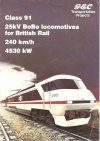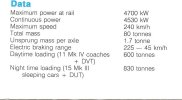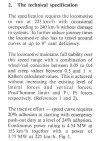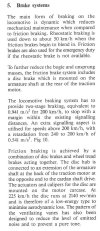You wouldn't be able to in real life, at least in the way you described. Mark 4 sets are effectively fixed formations. At one end there has to be the DVT and at the other end there needs to be the rear coach (I don't know the classification of it, but it's the one with no gangway).
I'm not saying you're wrong here (I've never worked with Mk4s) but what's your basis for this?
It was my understanding that Mk4s were essentially the same as any other coaching stock and there's nothing special about the TOE or DVT that would prevent the vehicles moving without them. Each has a brake res and distributor, all you'd need to do is find an appropriately coupler fitted loco with a red and yellow pipe and off you go with any formation. Providing ETS is another matter.
I'm not aware if it's possible to have one of those rear coaches at both ends, but assuming the Mark 4 DVT works in the same way as a Mark 3 DVT or Mark 2 DBSO, braking equipment is kept in the DVT which means one is essential for the train to function. If this is the case, a formation like the one in your post would need to have a 91 in front of the DVT which would ruin the look you're going for.
If its like a Mk3 or Mk2 it has the same brake equipment as the coaches, plus a brake frame (which connects to the brake valve). This can all be isolated and allow the vehicle to run as a standard coach - note also a DBSO or Mk3 DVT is not essential for a Mk2 or Mk3 rake.
It's the requirement for a handbrake, technically a 91 fulfils this.
The other requirement is dual actuation of the air brake at over 110mph, on HSTs each power car applies the brake simultaneously (the rear one is signalled electrically from the front).
Similarly on 225s, the brake is applied from both ends with either the 91 signalling the DVT or vice-versa. Again a second 91 should be able to work the high-speed brake like this.
Really for testing the two problems I see are:
- power supply (power draw of two 91s)
- braking distance (even with Flashing Greens, this was a bit tight at 140mph in poor rail conditions).
...which seems to address the above.
As far as I'm aware, wasn't the original plan always for 140mph with 1x 91 anyway?
With 2, you'd have double the HP, so power supply constraints aside, I imagine you'd be able to achieve a higher top speed. As noted above, however, finding appropriate infrastructure for such speeds may be challenging.
Unfortunately this is one of the downfalls of train simulator. Even with add ons and modifications, it's still far too much designed as a game. It doesn't have anything like the physics engines of some flight simulators so can't really teach you anything meaningful about "what ifs".
I can't imagine the ride would be great for the pax either!





